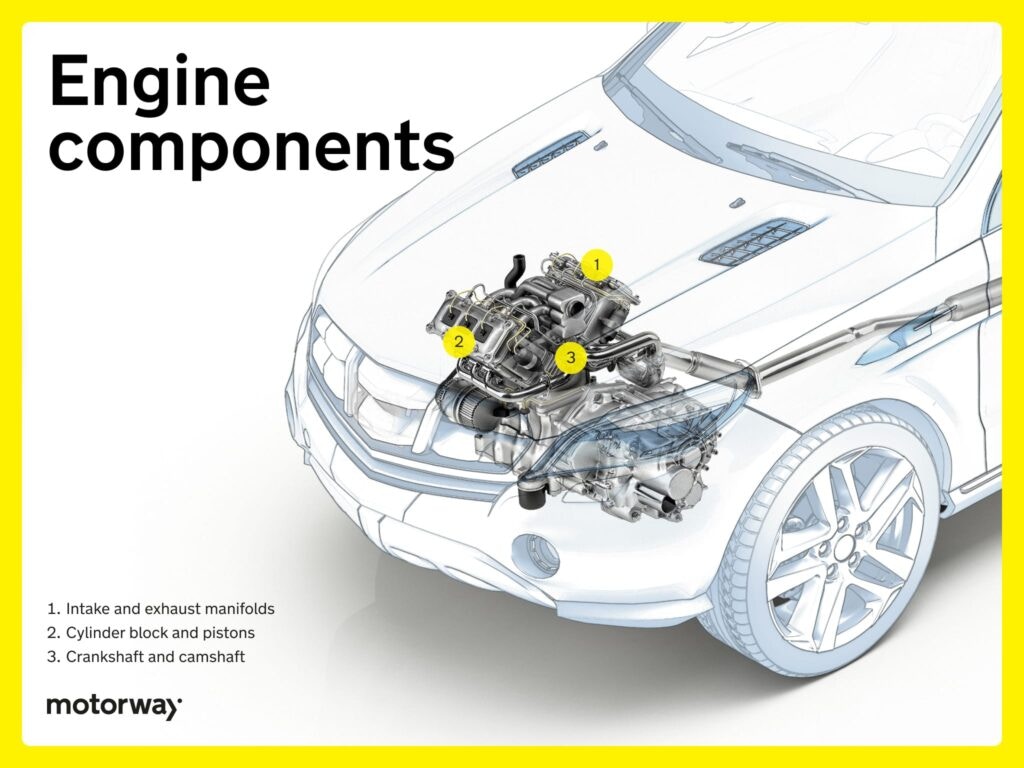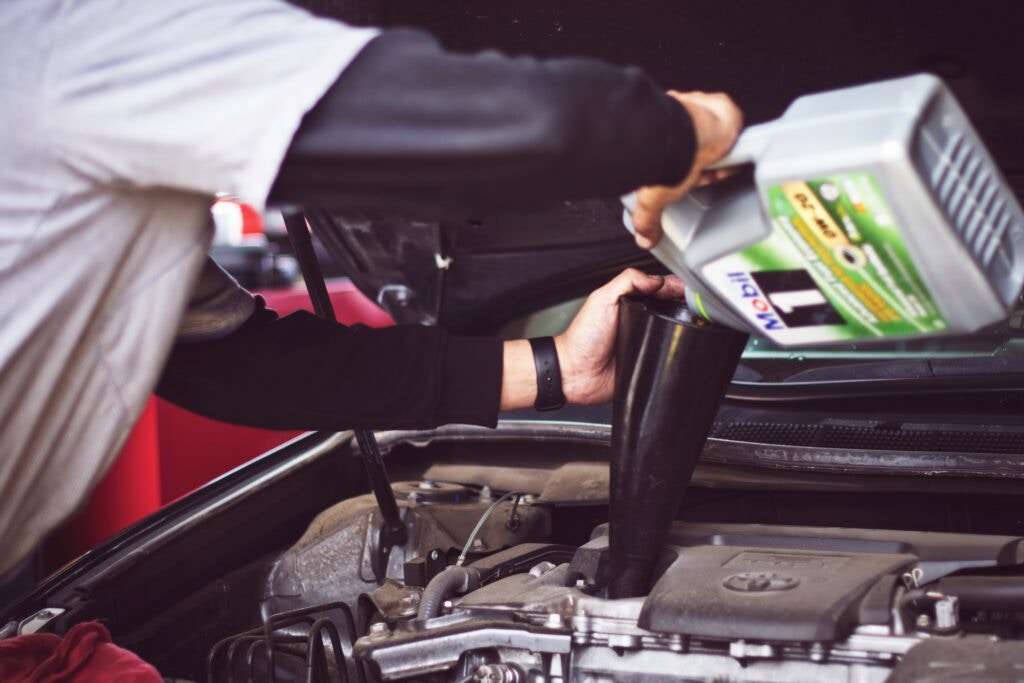How much does it cost to replace a head gasket?
The head gasket is a crucial part of your car’s engine. This small piece of machinery not only keeps the engine running smoothly, but protects your engine, cylinders, and other parts under your car’s hood from damage.
Even if you’re not quite ready to sell your car, head gasket issues should be inspected as soon as possible to protect the safety of drivers, passengers, and fellow motorists, as well as prevent further engine damage.
Replacing head gaskets is a significant, labour-intensive task. From the intricacies of the repair process to the choice of materials, we delve into the specifics of head gasket replacement and its varying price tags.
- What is a head gasket?
- Signs of a blown head gasket
- Is it worth repairing or replacing a head gasket?
- The process involved in replacing a head gasket
- Head gasket replacement cost factors
- 9 ways to lower your head gasket repair cost
- FAQs
What is a head gasket?

A critical part of your car’s internal combustion engine, the head gasket sits between the engine block and the cylinder head. It serves two primary functions:
- Sealing: sitting between the cylinder head and engine block, the head gasket maintains separate passages for engine oil, coolant, and the contained combustion process. The gasket prevents coolant and engine oil from leaking into the cylinders, which is crucial.
- Compression: This thin, durable barrier also helps maintain the high combustion pressures needed for your car’s engine to function efficiently.
The integrity of your head gasket is crucial for engine efficiency. A damaged head gasket can lead to loss of power or even catastrophic engine failure.

Signs of a blown head gasket
Engine overheating? Unexplained leaks? Engine fluids mixing with each other? Learn the common signs of a blown head gasket:
1. Engine overheating – Sudden temperature spikes and coolant loss without visible leaks
2. Exhaust smoke – White smoke (coolant burning) or blue-grey smoke (oil combustion) spewing from your exhaust pipe
3. Discoloured oil – Milky appearance on the dipstick due to coolant contamination in the oil
4. Bubbles in the radiator – Visible air bubbles in the radiator when the engine is running
5. External leaks – Visible coolant or oil leaks within your engine, and specifically around the head gasket
6. Poor engine performance – Such as reduced power and acceleration
7. Sweet exhaust smell – Could suggest head gasket failure and coolant burning in the engine
8. Unusual sounds – Hissing or gurgling noises from the coolant system
9. White residue on oil cap – The presence of a white, mayonnaise-like substance on your oil cap can indicate coolant mixing with the engine oil
Is it worth repairing or replacing a head gasket?

Does your head gasket need repair or a replacement? That depends. Assess the extent of the damage: minor issues may merit repair, but extensive damage may necessitate fully replacing the part.
Consider your car’s age, mileage, and overall condition; for older cars, especially those with high mileage, a head gasket replacement might only offer a temporary solution to an engine that’s starting to fail, part by part.
Compare the cost of repairs to the vehicle’s current market value, factoring in the cost of professional labour if needed. Evaluate the feasibility of intensive DIY repairs versus professional expertise.
DIY head gasket replacement
Replacing your car’s head gasket is an intensive task. While it’s possible to DIY this replacement, only do so if you’re a skilled handyman with experience fixing engine issues. Errors made during replacement can seriously damage your engine and threaten your and your passengers’ safety.
1. Engine disassembly – Remove components such as the cylinder head, timing belt, and camshaft to access the damaged head gasket.
2. Cleaning and inspection – Thoroughly clean the engine surfaces and inspect for any additional damage or issues.
3. Gasket removal – Carefully detach the old head gasket, ensuring all remnants are cleared from the surfaces.
4. Surface preparation – Smooth and clean the cylinder head and engine block surfaces to ensure proper sealing with the gasket.
5. New gasket installation – Delicately insert the new head gasket, aligning it with the engine components.
6. Reassembly – Reattach the cylinder head, camshaft, timing belt, and other components in the reverse order of disassembly.
7. Tightening and torquing – Follow manufacturer specifications to accurately torque bolts and ensure proper sealing without compromising engine integrity.
8. Fluid replacement – Refill coolant and oil, and perform necessary flushes to maintain the engine’s optimal functioning and that there are no coolant leaks.
9. Testing – Conduct thorough tests, including a compression test and checking for leaks, to verify the effectiveness of the replacement.
Cost variables

Gasket type
Two materials dominate the head gasket market, each coming in at a different price point. As their name suggests, Multi-Layer Steel (MLS) gaskets are composed of multiple layers of steel, offering enhanced durability and sealing. MLS gaskets tend to be pricier due to their robust construction.
Conversely, composite gaskets are made from a blend of materials. While these gasket types are more cost-effective up front, they may require replacement more frequently as the material can wear down. The choice between these gasket types significantly influences the overall cost, making it essential for car owners to weigh durability against budget constraints.
Damage severity
The extent of your head gasket damage affects overall replacement cost. Minor issues, such as localised leaks, may require small, targeted repairs that run at lower price points.
However, severe damage and complete gasket failure often require comprehensive replacement. The additional parts and intricate labour required here typically drive up the overall replacement cost.
Car owners should be vigilant and address issues promptly to mitigate extensive repair costs.
Car manufacturer
In the UK, your car’s brand can also impact the average cost of a head gasket replacement.
| Car manufacturer | Average UK head gasket replacement cost |
| Audi | £800 to £1,500 |
| BMW | £800 to £1,500 |
| Ford | £500 to £1,200 |
| Honda | £600 to £1,300 |
| Land Rover | £1,200 to £2,500 |
| Mercedes-Benz | £1,000 to £2,000 |
| Nissan | £400 to £1,000 |
| Toyota | £400 to £1,000 |
| Vauxhall | £500 to £1,200 |
| Volkswagen | £600 to £1,300 |
Labour
Your mechanic or garage’s labour costs contribute significantly to the overall expense of head gasket replacement. Professional services ensure the precise and skilled installation of the new gasket, promoting the longevity of the repair.
Replacement bills vary based on the complexity of the job, the mechanic’s expertise, and regional labour rates.
Additional costs
The process of replacing your head gasket may incur additional costs based on mechanic recommendations. These could include engine inspection fees, coolant and oil flushes, and replacing related components such as the thermostat or water pump.
Be sure to ask for a thorough assessment before and during the replacement to have the most accurate picture of the necessary repairs and their price tags.
9 ways to lower your head gasket repair cost
1. Routine maintenance – Regular maintenance is key for detecting issues early. Schedule regular engine inspections based on your manufacturer’s recommendations.
2. Proactive repairs – Address minor leaks promptly to prevent small issues from escalating into major headache head gasket problems.
3. Address warning signs – Take immediate action if signs of head gasket problems appear.
4. Follow driving guidelines – Drive responsibly and avoid harsh acceleration or deceleration to reduce stress on the engine.
5. Use quality coolant – Opting for high-quality coolant is one way to maintain head gasket integrity and prevent your car’s engine from corroding.
6. Monitor coolant levels – Keep an eye on your engine’s coolant levels and take care of leaks swiftly to prevent overheating and head gasket damage.
7. Properly warm up and cool down the engine – Allow your engine to warm up before driving hard. Similarly, let it cool down before turning off to reduce thermal stress on the head gasket.
8. Avoid overheating – Promptly address cooling system issues and avoid prolonged periods of high temperatures to prevent stress on both the head gasket and engine more generally.
9. Seek professional maintenance – Entrust major engine work, including head gasket replacement, to qualified professionals. Ensuring proper installation may prevent costly mistakes down the line.

FAQs
Is it worth fixing a blown head gasket?
Repairing a blown head gasket is worth considering if the damage is minimal, but extensive issues or an ageing vehicle may warrant fully replacing the part for long-term reliability. More so, replacing your head gasket will help you get the best price for your vehicle when you choose to sell.
Is changing a head gasket a big job?
Changing a head gasket is a complex task involving engine disassembly, cleaning, and precise reassembly. It requires skilled labour and can be a substantial undertaking; only people with mechanical experience should attempt to DIY. Improper head gasket replacement can further damage your vehicle, so when in doubt, consult a trained professional.
What is the engine life after a head gasket replacement?
The service life of an engine following head gasket replacement depends on overall vehicle maintenance, driving conditions, and the extent of prior engine damage. With proper care, many vehicles see prolonged functionality.
Does a head gasket sealer work?
Head gasket sealers can provide a temporary fix for minor leaks, but they’re not a permanent solution. A complete replacement is often necessary for lasting reliability.
Need to sell your car?
Want to learn more about owning, maintaining, and selling your car? Check out more of our guides here, covering everything from Clean Air Zones to car tax, and plate changes to part exchange.
- Sell my car
- Track your car value
- What are the most expensive parts of a car to replace?
- Car anatomy: what are the parts of a car?
- How to remove car scratches?
- How much does it cost to replace a gearbox?
- How much does it cost to replace a car engine?
- How much does it cost to replace a car suspension?
- How much does it cost to replace brake pads?
- How much does it cost to replace a windscreen?
The information provided on this page is for general informational purposes only and should not be considered as professional advice.